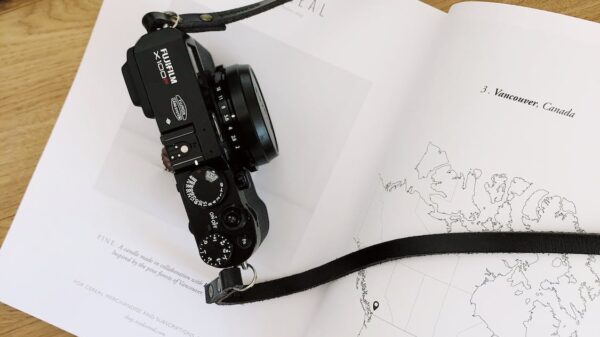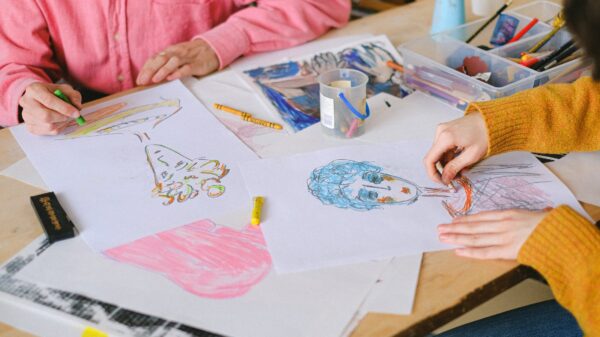Have you ever heard the saying “a picture is worth a thousand words”? Well, it’s true! Visual communication has the ability to convey ideas and emotions in ways that language alone cannot. Art transcends barriers of language and culture, bringing people together through shared experiences and emotions. In this blog post, we’ll explore the power of visual communication and how it can connect us all on a deeper level. So get ready to be inspired by the universal language of art!
Introduction to Visual Communication
Visual communication is the practice of conveying ideas and information using visual aids. It can be used to supplement or replace verbal communication, and is often more effective than written communication.
Humans are visual creatures, and we process visual information much faster than written or spoken language. In fact, research has shown that our brains process images 60,000 times faster than text! This makes visuals an incredibly powerful tool for communication.
Visuals can also be used to communicate across cultures and languages. While words may be lost in translation, images are universal. They can help us connect with others, even if we don’t share a common language.
The power of visual communication is clear. By understanding how to use visuals effectively, we can communicate more effectively with others and make a lasting impact.
Benefits of Visual Communication
Visual communication is a powerful tool that can transcend language and culture. In a world where information is increasingly globalized, the ability to communicate across borders is more important than ever.
Visual communication has the ability to reach people of all backgrounds and cultures. It can break down barriers and help people understand each other. In a world that is becoming more and more interconnected, this is an invaluable skill.
Visual communication can also be used to convey messages that are difficult to express in words. Art has the power to evoke emotions and convey messages that words alone cannot. It can reach people on a deeper level and connect with them in a way that language cannot.
The benefits of visual communication are vast. In a world that is becoming increasingly globalized, it is an invaluable tool for connecting with people from all corners of the globe. It can also be used to communicate messages that are difficult to express in words, making it a powerful tool for reaching people on a deeper level.
Types of Visual Communication
There are many different types of visual communication, each with its own strengths and weaknesses. Here are a few of the most common:
1. Images: A picture is worth a thousand words, as they say. And it’s true – images are often the most powerful form of communication, able to convey emotion and meaning without the need for words. They can be used to tell stories, sell products, or simply capture a moment in time.
2. Videos: Like images, videos are also very effective at conveying emotion and meaning. But they have the added bonus of being able to include sound, which can make them even more powerful. Videos can be used for everything from marketing campaigns to educational purposes.
3. Infographics: An infographic is basically a visual way of representing information or data. They’re often used to make complex topics more understandable, or to make dull data more interesting. Infographics can be used for anything from explaining a scientific concept to showing the results of market research.
4. Charts and graphs: These are another way of representing data visually, but unlike infographics they tend to be more focussed on numbers and statistics rather than storytelling or explanation. charts and graphs are often used in business presentations or reports to make complex data sets easier to understand.
5. Maps: Maps are a great way of visualising spatial information – they can show everything from where something is located (like a city or country
How Art Transcends Language and Culture
The power of visual communication is its ability to transcend language and culture. A picture is worth a thousand words, and this is especially true when it comes to art. Art has the ability to speak to us on a level that goes beyond words. It can touch our emotions and convey messages that are difficult to express in words.
This is why art is such an important tool for communication across cultures. It is a universal language that can be understood by people from all walks of life, regardless of their native tongue. And it has the power to break down barriers and build bridges between people from different backgrounds.
Art can also be used as a tool for social change. It has the ability to raise awareness about important issues and spark conversation and debate. It can challenge our preconceptions and help us see the world in new ways. Art has the power to change lives.
Exploring the Power of Visual Language
In a world that is increasingly globalized, the ability to communicate across cultures is more important than ever. However, language barriers can make this difficult. Visual language, on the other hand, is a universal form of communication that can transcend cultures.
There are many ways to use visual language to communicate. Art is one of the most powerful forms of visual communication. It can convey emotion and meaning without the need for words.
Many people believe that art is a universal language that everyone can understand. This may be true to some extent, but it is also important to remember that culture plays a role in how we interpret art.
Different cultures have different ways of looking at and understanding art. For example, in Western cultures, art is often seen as something that is aesthetically pleasing or emotionally moving. In Eastern cultures, however, art may be seen as a way to balance the energies of the universe.
It is important to be aware of these differences when communicating with people from other cultures. By understanding the power of visual language, we can better bridge the cultural divide and create a more connected world.
Examples of Visual Communication Across Different Cultures
There are countless examples of how visual communication has transcended language and culture throughout history. One example is in the ancient Egyptian hieroglyphs, which were used as a form of written communication that was understood by people of all social classes. This allowed for a wide range of information to be conveyed, from religious texts to royal decrees.
Another example comes from the traditional Japanese art of sumi-e, or ink painting. This form of visual communication uses simple black and white images to convey complex concepts and emotions. The minimalistic approach of sumi-e has been adopted by many modern artists, who use it to communicate messages that transcend cultural barriers.
Visual communication is also an important part of indigenous cultures around the world. In many cases, these cultures have developed their own unique systems of pictorial language that encode specific knowledge and tradition. For example, the Tzotzil Maya people of Mexico use a system known as “tzolk’in” to communicate dates and events related to their agricultural cycle. Similarly, the Navajo people in the southwestern United States have developed a rich visual vocabulary to express their cosmology and beliefs.
These are just a few examples of how visual communication has played an important role in cultures around the world. As our world becomes increasingly interconnected, it is more important than ever before for us to find ways to communicate across cultural barriers.
The Role of Technology in Enhancing Visual Communication
In our increasingly digital world, it’s more important than ever to be able to communicate visually. Technology has made it possible for people from all over the globe to connect and share ideas instantaneously. The power of visual communication is that it can transcend language and culture barriers.
A picture is worth a thousand words, and with today’s technology, we can share images and videos instantly with anyone in the world. This is an incredible tool for businesses, educators, and individuals who want to share their message with a global audience.
There are endless possibilities for how technology can be used to enhance visual communication. For example, businesses can use video conferencing to hold meetings with clients or employees who are located in different parts of the world. Educators can create engaging presentations that include multimedia content to reach a wider range of learners. And individuals can use social media platforms to share their photos and stories with friends and family members who are far away.
The role of technology in enhancing visual communication is essential in our modern world. By using technological tools, we can connect with others across the globe and share our messages in a powerful way.
Conclusion
The power of visual communication is undeniable. Art transcends language and culture, providing a powerful tool for expression and understanding that can bridge even the greatest divides between people. Whether it’s through paintings, illustrations, photographs or movies, art conveys meaning in ways that words cannot. It gives us an opportunity to see beyond our own limitations and better understand someone else’s perspective—and ultimately find common ground.










